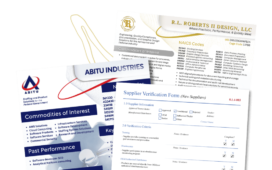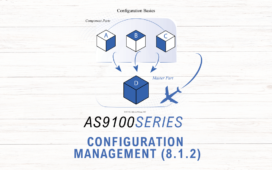As the cooler months approach, homeowners and businesses alike are considering HVAC (Heating, Ventilation, and Air Conditioning) equipment upgrades or replacements. Fall is typically an ideal time for such investments as it offers a middle ground between the sweltering heat of summer and the biting cold of winter. However, understanding the factors that influence HVAC heating equipment prices can help make informed decisions. In 2024, several key elements are shaping the cost landscape for HVAC systems, making it crucial to assess trends and options available this fall.

Key Factors Affecting HVAC Heating Equipment Prices in Fall 2024
Raw Material Costs
One of the most significant factors impacting HVAC prices in 2024 is the cost of raw materials. The global demand for metals such as copper, aluminum, and steel, which are essential in the production of HVAC systems, has surged over the past couple of years. In addition to supply chain disruptions caused by the lingering effects of the COVID-19 pandemic, inflationary pressures and energy costs have further driven up prices. For instance, copper prices have fluctuated between $8,000 and $9,500 per ton in 2024, adding to the manufacturing costs of HVAC components, such as wiring and coils.
Energy Efficiency Standards
New energy efficiency standards continue to influence HVAC equipment prices in fall 2024. Governments worldwide, especially in the United States and the European Union, have tightened energy performance regulations for heating equipment. In January 2023, the U.S. Department of Energy (DOE) introduced new Seasonal Energy Efficiency Ratio (SEER2) standards, which pushed manufacturers to develop more efficient systems. While these regulations are designed to reduce energy consumption and environmental impact, the upgraded technology required to meet these standards can increase the upfront cost of heating units.
Consumers can expect to pay a premium for units that meet or exceed SEER2 and AFUE (Annual Fuel Utilization Efficiency) standards. However, the long-term energy savings often justify the initial expense. For example, high-efficiency furnaces (with AFUE ratings of 95% or higher) may cost around $1,000 to $2,500 more than standard units, but the savings on energy bills over time make them a more economical choice in the long run.
Supply Chain Challenges
While supply chains have largely recovered from the disruptions seen during the pandemic, 2024 still experiences some lingering effects. Global shipping bottlenecks, a shortage of semiconductor chips (essential for modern HVAC control systems), and fluctuating fuel costs have contributed to erratic availability and delivery timelines for HVAC equipment. This unpredictability in supply and demand has led to a slight increase in prices for consumers.
Additionally, labor shortages in manufacturing and installation sectors have played a role in escalating costs. Skilled HVAC technicians are in high demand, and their services come at a premium, particularly during peak installation seasons like fall. This labor shortage further amplifies the overall cost of purchasing and installing heating equipment.
Technological Advancements
Technological innovation is another factor driving HVAC equipment costs in 2024. Heating systems with smart capabilities, including Wi-Fi-enabled thermostats and remote control features, are becoming increasingly popular. These advanced systems offer more precise temperature regulation, energy monitoring, and enhanced comfort, but they come at a higher price point.
In particular, heat pumps—often considered more environmentally friendly than traditional gas furnaces—have seen rapid technological advancements. Variable-speed compressors and inverter technology are becoming more common in modern heat pumps, significantly improving their efficiency. A high-end heat pump with these features could range from $3,000 to $7,500, depending on its capacity and efficiency level.
Government Incentives and Rebates
Fortunately, 2024 has been a favorable year for consumers looking to purchase energy-efficient heating systems, thanks to a range of government incentives and rebates. In the United States, programs such as the federal Energy Star rebate and various state-level incentives provide financial assistance for upgrading to more efficient HVAC equipment. These incentives can offset some of the initial costs and make high-efficiency models more accessible.
For example, consumers purchasing a qualifying energy-efficient furnace or heat pump could receive rebates ranging from $300 to $1,500, depending on the unit’s efficiency level and the program they apply to. Moreover, tax credits for energy-efficient home improvements have been extended through 2024, providing an added financial benefit for HVAC upgrades.
Expected Price Ranges for HVAC Heating Equipment in Fall 2024
Based on current market conditions and the factors outlined above, the prices of common heating equipment in fall 2024 are as follows:

- Furnaces: Gas furnaces typically range between $2,000 and $6,000 for standard models. High-efficiency models can cost upwards of $7,500.
- Heat Pumps: Air-source heat pumps are priced between $3,000 and $7,500, depending on the size and efficiency. Ground-source (or geothermal) heat pumps, which offer even greater efficiency, can cost $10,000 to $25,000, including installation.
- Boilers: The cost of a new boiler system can range from $3,000 to $7,000 for a standard model, with high-efficiency units exceeding $10,000.
- Ductless Mini-Split Systems: These systems, popular for their efficiency and flexibility, range from $2,000 to $8,000, depending on the number of zones and efficiency ratings.
HVAC heating equipment prices in fall 2024 reflect a combination of factors, including rising raw material costs, stringent energy efficiency standards, supply chain challenges, technological advancements, and the availability of government incentives. While prices have increased in certain categories, consumers can mitigate some of these costs by taking advantage of rebates and focusing on long-term energy savings.
Sources
- U.S. Department of Energy (DOE), Energy Efficiency Standards for Residential and Commercial HVAC Systems, January 2023.
- International Copper Study Group (ICSG), World Copper Market Forecast, 2024.
- HVAC Insider, Heat Pumps and Technological Innovations in 2024, August 2024.
- Federal Energy Star Program, Energy Efficiency Rebates for 2024, March 2024.
- U.S. Bureau of Labor Statistics, Labor Market Trends in the HVAC Sector, July 2024.















